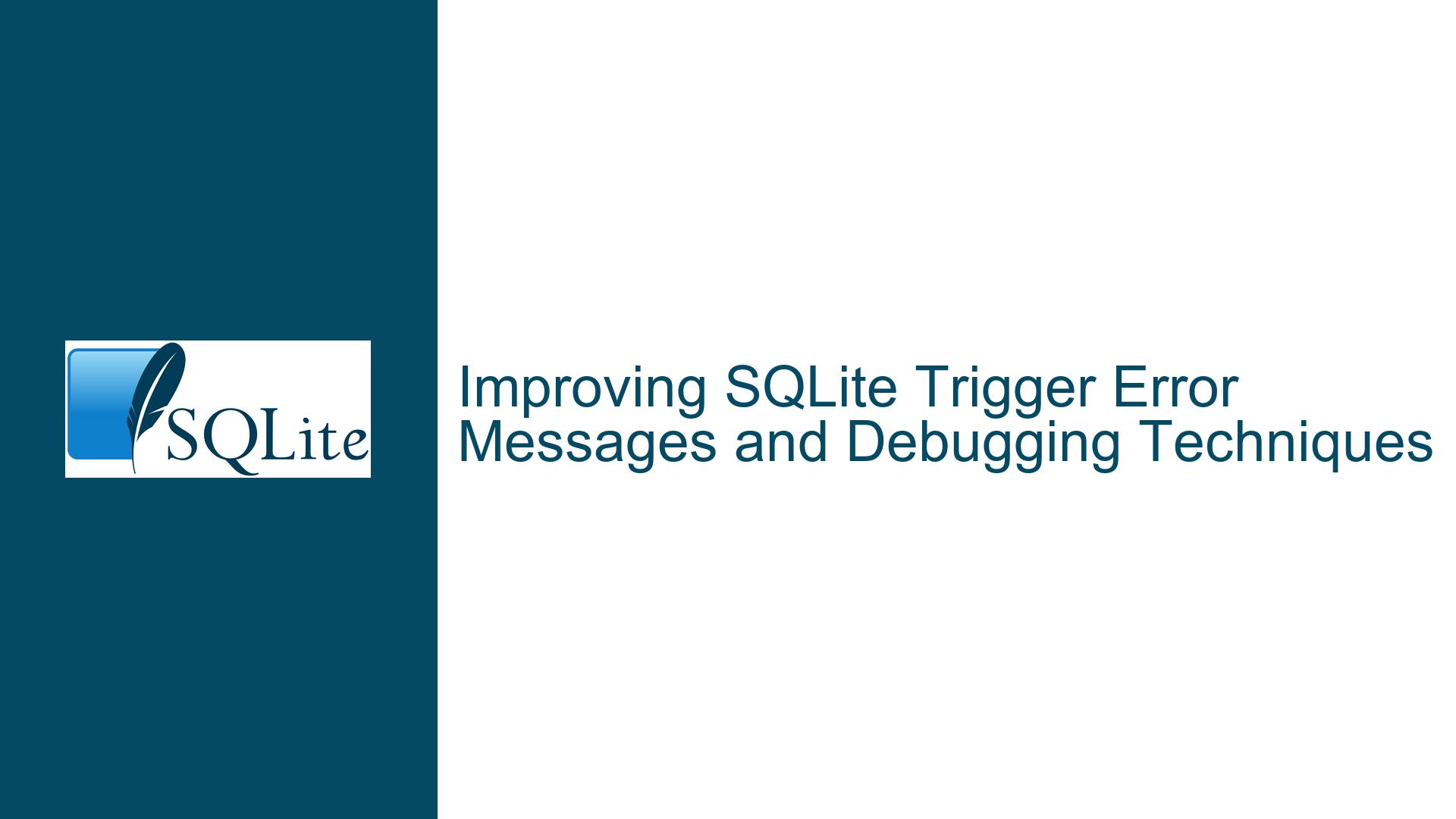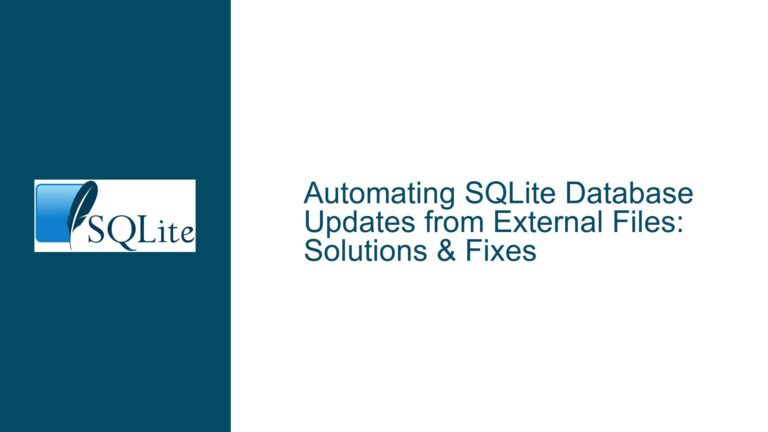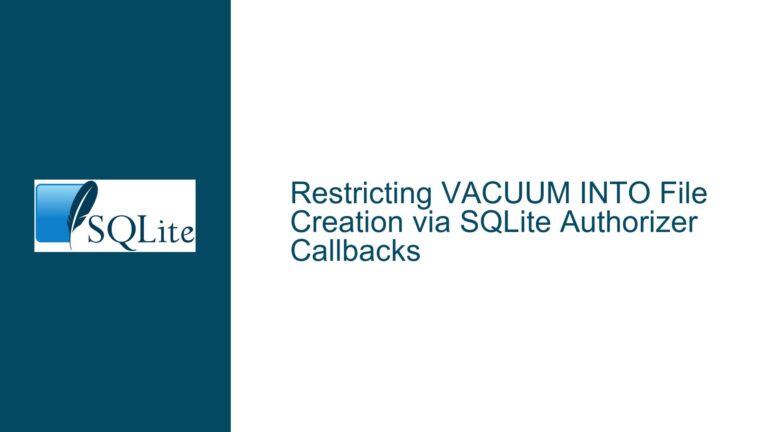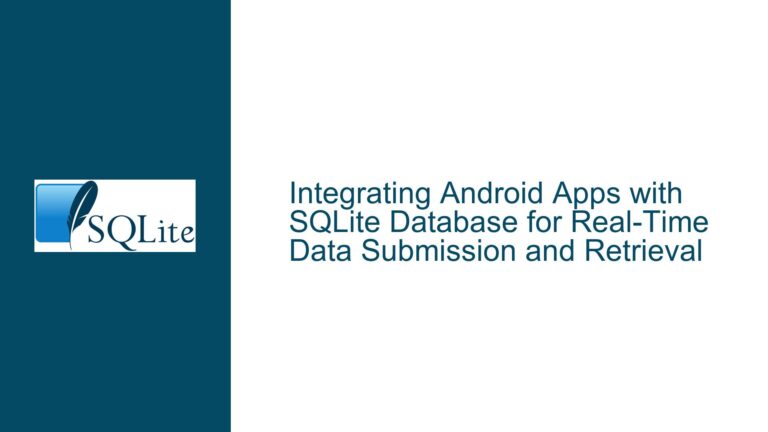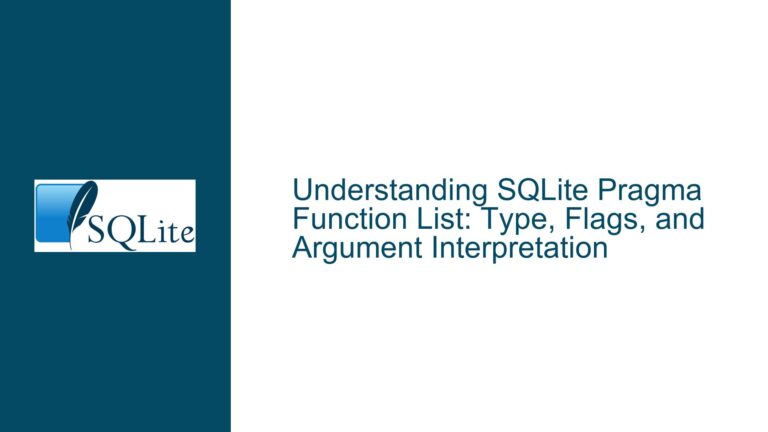Improving SQLite Trigger Error Messages and Debugging Techniques
Understanding the "No Such Column" Error in Trigger Contexts
When working with SQLite, one of the most perplexing issues that developers encounter is the "Parse error: no such column" message, especially when the column in question clearly exists in the table schema. This issue becomes even more confusing when triggers are involved, as the error message does not explicitly indicate that a trigger is the source of the problem. This post will delve into the intricacies of this issue, explore its root causes, and provide detailed troubleshooting steps and solutions to help you navigate and resolve such errors effectively.
The Role of Triggers in SQLite and Common Pitfalls
Triggers in SQLite are powerful tools that allow you to automate actions in response to specific changes in your database, such as inserts, updates, or deletes. However, they can also introduce complexity, especially when it comes to debugging errors. The error message "Parse error: no such column" often arises in the context of triggers due to several reasons, including scoping issues, incorrect references, or missing dependencies.
In the example provided, the trigger TRG_KEY_ID_DEL is defined to execute after a delete operation on the KEY_ID table. The trigger attempts to update the REF_CNT column in the KEY_TYPE table based on the count of related rows in the KEY_ID table. However, the error message "Parse error: no such column: ID" is misleading because the column ID does exist in the KEY_ID table. The confusion arises because the error is not directly related to the table schema but rather to how the trigger is referencing the column within its logic.
One of the key issues here is the scope of column references within the trigger. In SQLite, when you reference a column within a trigger, you must be explicit about whether you are referring to the OLD or NEW row context. In the case of a delete trigger, only the OLD row context is available, as the row is being removed. Therefore, any reference to a column without specifying the OLD context can lead to ambiguity and errors.
Detailed Troubleshooting Steps and Solutions
To resolve the "no such column" error in the context of triggers, follow these detailed troubleshooting steps:
Verify Column References in Triggers: Ensure that all column references within the trigger are explicitly scoped to either the
OLDorNEWrow context. In the example triggerTRG_KEY_ID_DEL, the reference toIDshould beOLD.IDto clearly indicate that the column belongs to the row being deleted. This explicit scoping helps SQLite correctly interpret the column reference and avoids ambiguity.Check Trigger Logic for Correctness: Review the logic within the trigger to ensure that it correctly handles the intended operation. In the example, the trigger attempts to update the
REF_CNTcolumn in theKEY_TYPEtable based on the count of related rows in theKEY_IDtable. Ensure that the subquery within the trigger correctly references theTYPE_IDcolumn and that the logic aligns with the intended behavior.Enable Foreign Key Enforcement: As mentioned in the discussion, SQLite’s foreign key constraints are deferred by default, meaning they are enforced at commit time rather than at the time of the individual operation. To ensure that foreign key constraints are enforced immediately, you must enable foreign key enforcement using the
PRAGMA foreign_keys = ON;statement. This step is crucial to prevent inconsistencies in your data and to ensure that the trigger operates within a consistent database state.Use RAISE Statements for Custom Error Messages: To improve the clarity of error messages within triggers, consider using the
RAISEstatement to generate custom error messages. This approach allows you to provide more context about the error, making it easier to diagnose issues. For example, you can modify the trigger to include aRAISEstatement that provides detailed information about the error, such as the specific column or value that caused the issue.Test Triggers in Isolation: When debugging triggers, it is often helpful to test them in isolation from the rest of the database operations. You can do this by creating a simplified version of the database schema and running the trigger logic independently. This approach allows you to identify and resolve issues without the complexity of the full database context.
Review Database Schema and Dependencies: Ensure that the database schema is correctly defined and that all dependencies between tables are properly established. In the example, the
KEY_IDtable references theKEY_TYPEtable via a foreign key constraint. Verify that theKEY_TYPEtable exists and that the foreign key relationship is correctly defined. Additionally, ensure that the order of table creation and data insertion aligns with the dependencies between tables.Update to the Latest Version of SQLite: While the example uses SQLite 3.44.0, it is always a good practice to use the latest version of SQLite. Newer versions often include bug fixes, performance improvements, and enhanced error messages that can help you diagnose and resolve issues more effectively.
By following these troubleshooting steps, you can effectively resolve the "no such column" error in the context of triggers and improve the overall robustness of your SQLite database. Additionally, these steps will help you develop a deeper understanding of how triggers work in SQLite and how to use them effectively in your database design.
Conclusion
The "no such column" error in SQLite, particularly when triggers are involved, can be a challenging issue to debug. However, by understanding the role of triggers, verifying column references, enabling foreign key enforcement, and using custom error messages, you can effectively resolve this issue and improve the clarity of your error messages. Additionally, testing triggers in isolation and reviewing your database schema and dependencies will help you identify and address potential issues before they become problematic. By following these best practices, you can ensure that your SQLite database operates smoothly and that your triggers function as intended.
